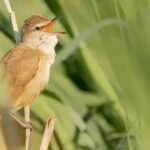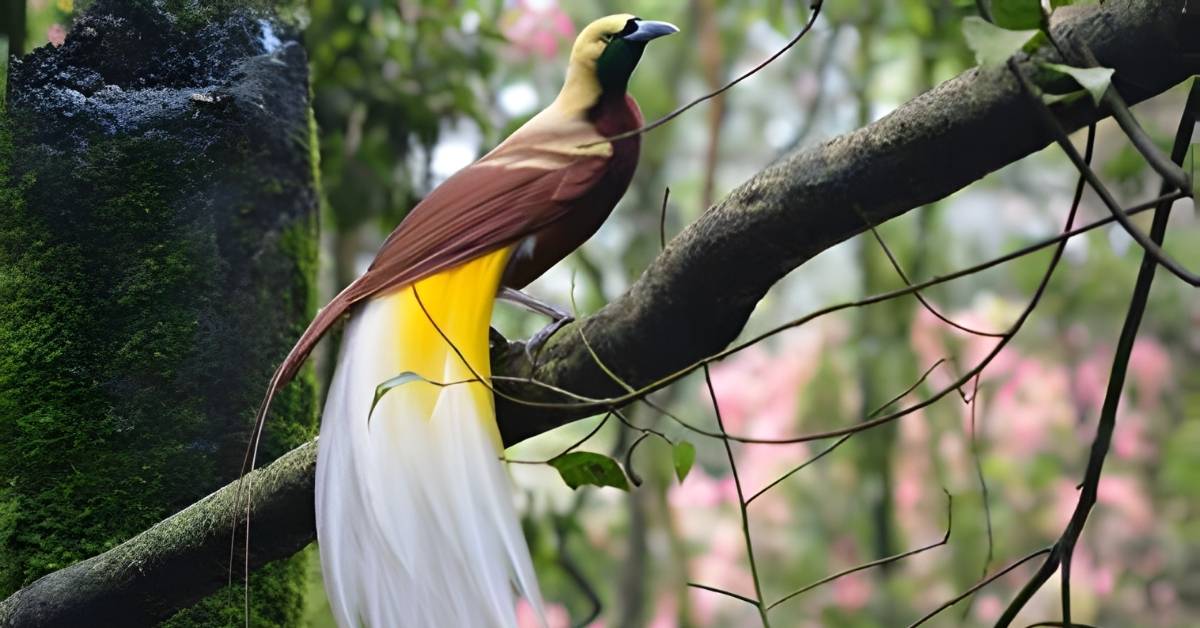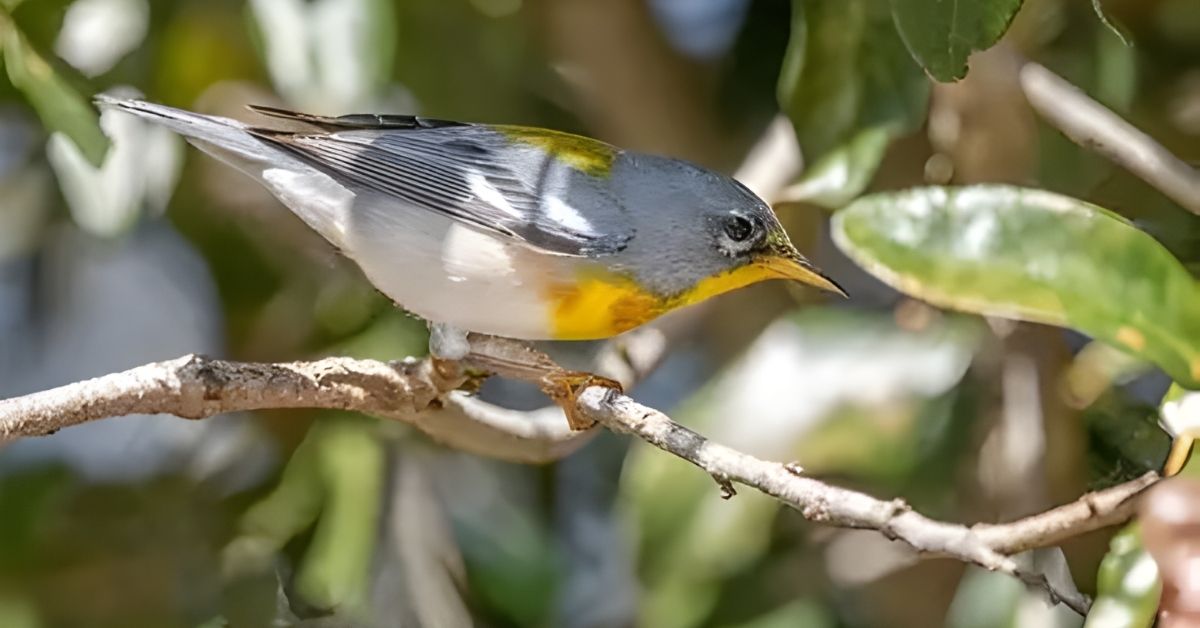Birds with long tails have always amazed people. These birds show off beauty, elegance, and power with their flowing feathers. Around the world you can spot birds with long tails in forests, grasslands, oceans, and even deserts. Each species uses its tail in a special way. Some birds with long tails attract mates, others use them for balance, and many rely on them for survival.
When you think of birds with long tails, names like the peacock, quetzal, or tropicbird come to mind. Their tails create dazzling displays that catch your eye. Birds with long tails remind us how creative nature can be.
White-tailed Tropicbird

The White-tailed Tropicbird is one of the most graceful seabirds to ever glide across tropical skies. Found in the Caribbean islands, as well as over parts of the Pacific and Atlantic, it is instantly recognizable by the elongated central tail feathers that trail like ribbons behind its white body. When flying over the ocean, the tropicbird looks almost like a piece of silk floating on the wind. These feathers are not just for beauty. They play a role in flight balance and are an important part of mating displays.
For birdwatchers traveling from the USA, spotting this species feels unforgettable. The tropicbird’s pure white plumage, highlighted by long streamers, creates one of nature’s most spectacular sights. While it might seem delicate, the bird is a strong flier, able to dive straight into the sea to catch fish. Much like the Long-tailed Duck or Long-tailed Jaeger in the Arctic regions, its long feathers carry practical weight, proving that beauty and utility can blend perfectly in nature’s design.
Superb Lyrebird
The Superb Lyrebird of Australia is perhaps the most famous bird for combining a long tail with musical brilliance. Males carry an ornate feather structure that looks like the shape of a lyre, a stringed instrument from ancient Greece. When the breeding season begins, the male clears a small stage-like area on the forest floor. Then, with tail feathers fanned over his body, he performs one of the most extraordinary displays in the bird world. Along with this visual show, the lyrebird sings by mimicking every sound around it other bird calls, the rustle of wings, even the noise of chainsaws.
This combination of ornate plumage and vocal mimicry makes the Superb Lyrebird a wonder of courtship. Much like the Indian Peafowl that spreads its train during courtship or the Resplendent Quetzal that flashes its long iridescent plumage, the lyrebird’s tail acts as both a visual signal and a performance tool. In this way, it reminds us how sexual selection has shaped tails into tools not just for survival but also for artistry.
Common Pheasant
Across the USA, the Common Pheasant is one of the most familiar long tailed birds because it has been widely introduced as a game species. This bird, originally from Asia, now thrives across North America’s farmlands, grasslands, and open fields. The male pheasant’s body glows with colorful plumage, but what stands out most is its elongated barred tail. These tail feathers create an elegant silhouette as the bird moves across the land.
The Common Pheasant relies on its tail not only for display but also for camouflage. In the tall grass, those barred patterns help break up the bird’s outline, protecting it from predators. Much like the Great Argus Pheasant, which fans out its tail to show incredible patterns, or the Long-tailed Widowbird in African grasslands, the pheasant proves that a long tail can play many roles in both survival and courtship.
Great Argus Pheasant

The Great Argus Pheasant of Southeast Asia is one of the most extraordinary long-tailed species. Males carry tail feathers that can extend more than five feet in length, covered with “eye” patterns that shimmer in the forest light. During breeding season, the male spreads these feathers into a giant fan, creating a visual display unlike any other.
This incredible courtship reminds us of the Ribbon-tailed Astrapia, a bird-of-paradise from New Guinea with tail feathers more than three times the body length, sometimes over 1 m long. Like the Argus, it shows how ornamentation can go beyond simple function, turning into a living artwork designed to mesmerize. Both species stand as examples of how far evolution can push sexual selection to create elongated traits in plumage.
Alexandra’s Parrot
Known as Princess Alexandra’s Parrot or Polytelis alexandrae, this bird stands out as one of the most elegant parrots in the world. Native to the deserts of Australia, it carries a slim body, bright plumage, and a tail that stretches far beyond its back. This long, sleek tail gives the parrot an unusual grace when flying across open skies.
Although rare in the wild, the species is admired by bird enthusiasts in aviaries across the globe. Its beauty, especially its elongated tail, makes it a prized bird, though conservation concerns remain as populations decline. Much like the Resplendent Quetzal of Central America or the Long-tailed Starling of New Guinea, this parrot proves how dazzling tails remain important in attracting mates and impressing observers.
Also Read This: Robin vs Cardinal – America’s Iconic Birds
White-bellied Go-Away Bird
The White-bellied Go-Away Bird is a striking African species with a comical name. Its call resembles the words “go-away,” giving it instant recognition among locals and birdwatchers. With a bold crest on its head and a long tail that provides balance, this fruit-eating bird is often seen perched in groups.
Unlike the more colorful pheasants and parrots, this bird has more subdued plumage. Still, its long tail is essential for balance and communication within the flock. Just as motmots use their racket-tipped tails as signals or nightjars display elongated tail feathers with patterns, the Go-Away Bird uses its tail as part of its everyday life, proving tails are as functional as they are beautiful.
Streamertail
The Streamertail, known as the national bird of Jamaica, is a hummingbird famous for its ribbon-like tail feathers. Also called the “doctor bird,” it carries long rectrices that stream behind as it darts between flowers. Despite the length of its feathers, the Streamertail remains one of the most agile fliers in the bird world, hovering and maneuvering with incredible precision.
There are two species, the Red-billed and Black-billed Streamertail, both showcasing the same dramatic tails. Like the Long-tailed Widowbird of Africa or the Fork-tailed Flycatcher in the Americas, this hummingbird uses its elongated feathers in courtship. When the male hovers near the female, the tail ribbons shimmer and dance, turning a simple flight into a performance.
Greater Racket-tailed Drongo
The Greater Racket-tailed Drongo is a master of deception and display. Native to South and Southeast Asia, it carries two long tail feathers with dramatic racket-shaped tips. These tails give it a strange, stylish outline in flight. But its most impressive feature is its intelligence. Like the Superb Lyrebird, it can mimic the calls of other birds, often using this trick to confuse both predators and rivals.
The drongo’s tail is more than just decoration. It plays a role in aerial maneuvers and intimidation. Similar to how the Long-tailed Fiscal wags its tail as a signal in East Africa, the drongo flashes its unique shape to stand out in dense forests. These tails show how elongated traits can serve not only as courtship tools but also as functional features in daily survival.
Fork-tailed Flycatcher
The Fork-tailed Flycatcher is one of the most dramatic long tailed birds in the Americas. Its deeply forked tail is often longer than its body, giving it a distinctive silhouette when perched on wires or flying across open fields. This bird breeds in South America but often travels north, sometimes reaching the southern USA during migration, giving American birdwatchers the chance to see its elegance up close.
The forked tail is more than just beautiful. It helps the bird twist and turn in mid-air while hunting insects, acting like a rudder for precise flight. During courtship, the tail becomes even more important as the male performs aerial dances to attract females. Just like the Streamertail hummingbirds of Jamaica or the Long-tailed Jaeger of the Arctic, the Flycatcher proves that elongated feathers can serve both ornamentation and functionality.
White-throated Magpie-jay

The White-throated Magpie-jay is a flamboyant bird found in Central America, sometimes straying into the southern USA. With its long elegant tail, striking blue and white plumage, and tall crest, it is one of the most remarkable species in its region. These birds are social and noisy, often seen in groups, calling loudly from treetops.
The tail is a defining feature of this jay. It helps in balancing as the bird moves quickly through the canopy, and it adds extra flair to its already impressive appearance. In many ways, its role is similar to the Indian Peafowl’s ornate train, the Quetzal’s long iridescent display, or the Long-tailed Widowbird’s spectacular flowing tail.
FAQs
What kind of bird has a long tail?
Birds with long tails include species like peafowls, quetzals, widowbirds, and tropicbirds, known for elongated feathers used in display, balance, or flight.
What is a longtail bird?
A longtail bird is any bird species with tail feathers that are noticeably longer than their body, often used for courtship, communication, or maneuvering in flight.
What British birds have long tails?
In Britain, birds like the long-tailed tit, magpies, and some wagtails are known for their long, graceful tails that aid balance and display.
Conclusion
Birds with long tails are some of the most amazing creatures in nature. These birds show how beauty and function can work together. Their tails help them attract mates, balance in flight, and communicate with others. Birds with long tails come in many shapes, colors, and sizes. You must look closely to see all their details. Some tails are long and flowing, while others have patterns or special tips.
Watching birds with long tails teaches us about nature’s creativity. You must admire their grace and skill. Birds with long tails are not just pretty. They must survive, signal, and perform every day. Observing birds with long tails is always exciting.

Spiritual Vora shares deep insights on dreams, angel numbers, spiritual meanings, and inner healing. Our mission is to guide souls toward clarity, growth, and divine connection through uplifting and enlightening content.











